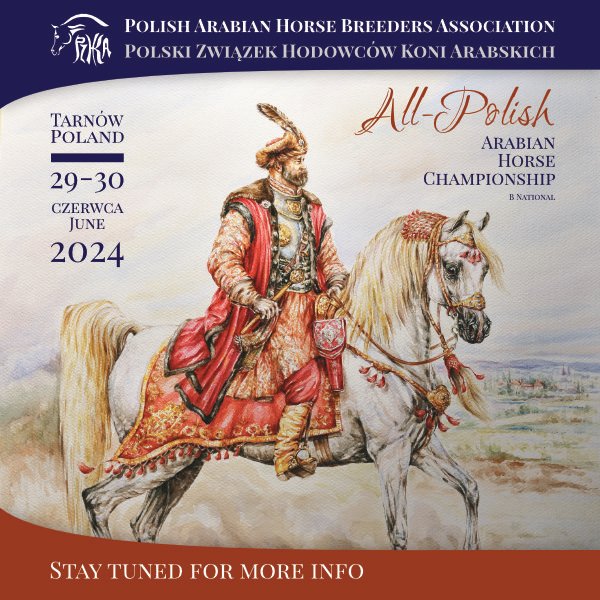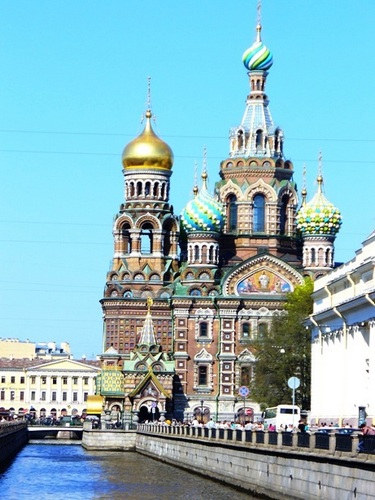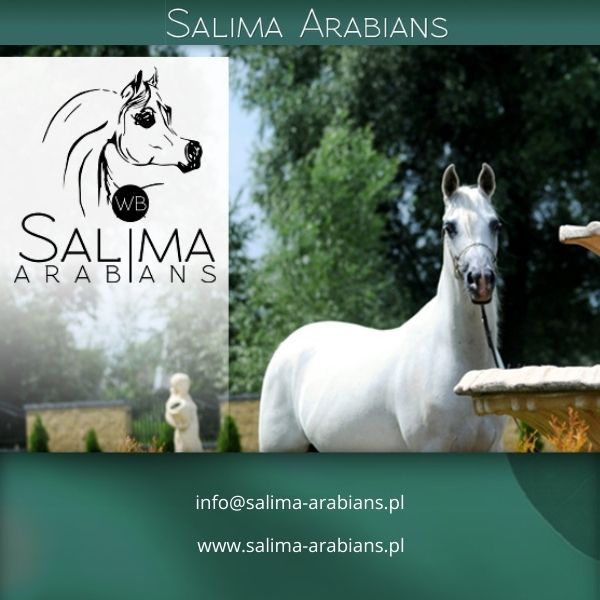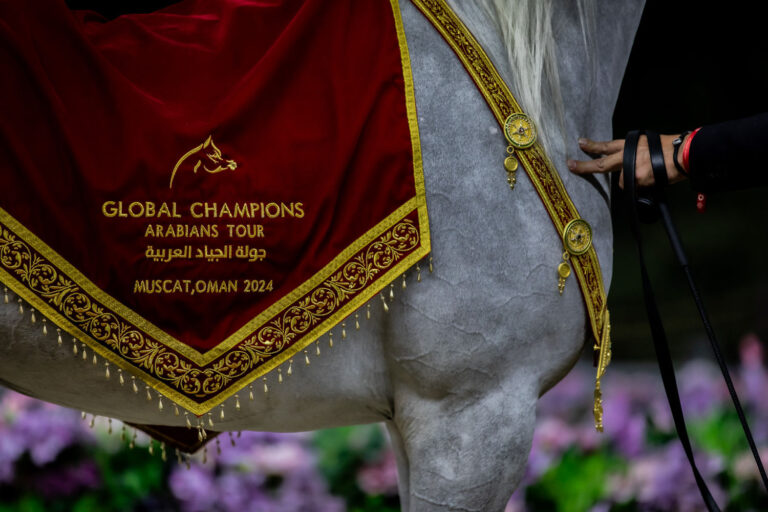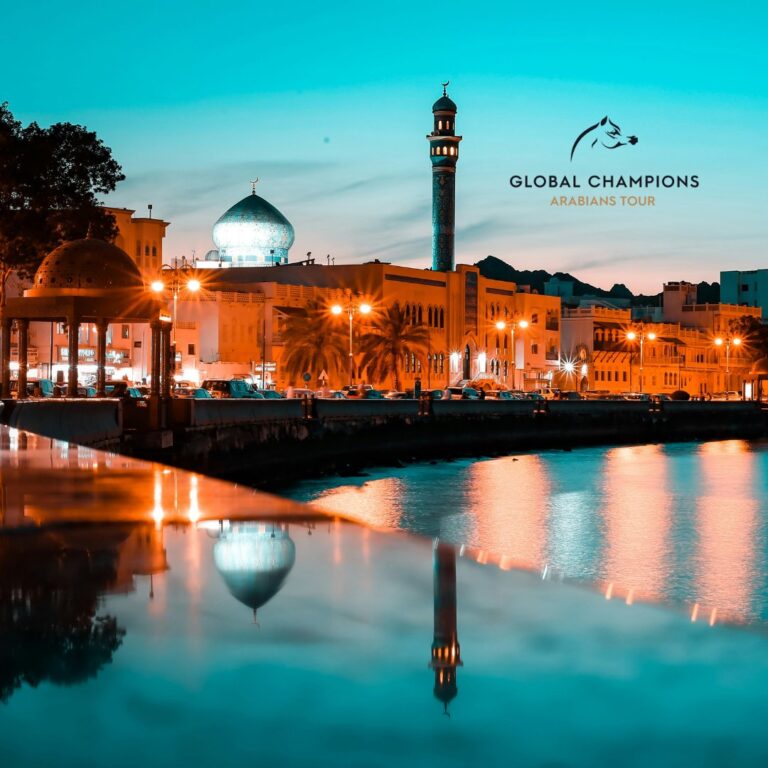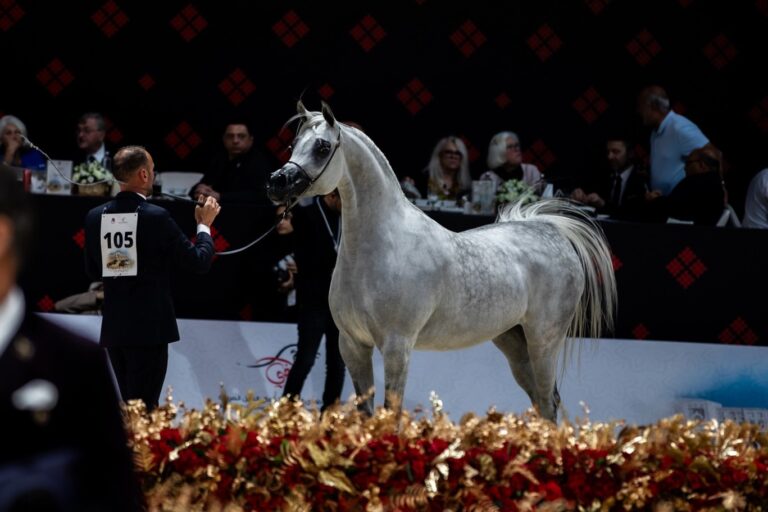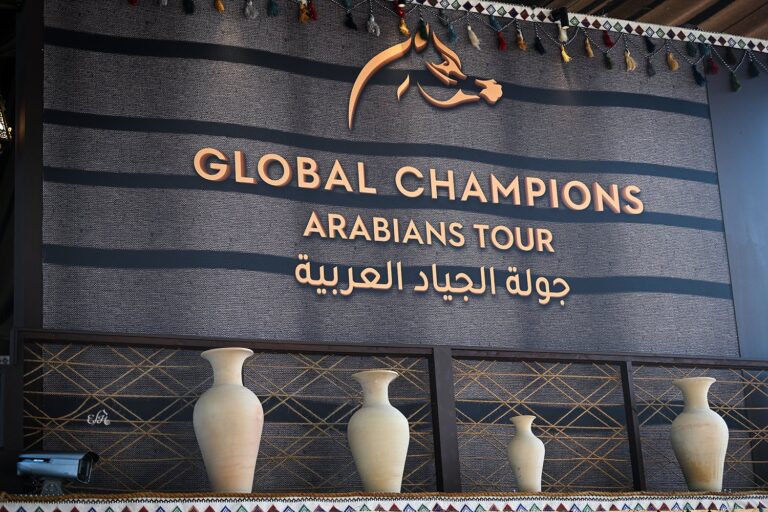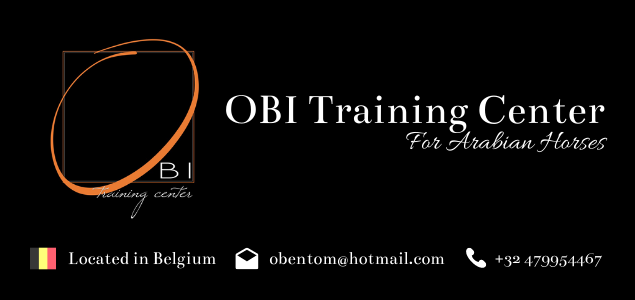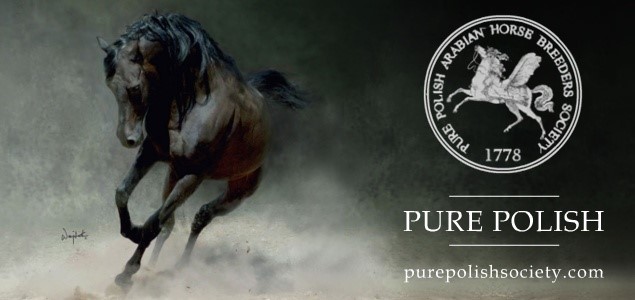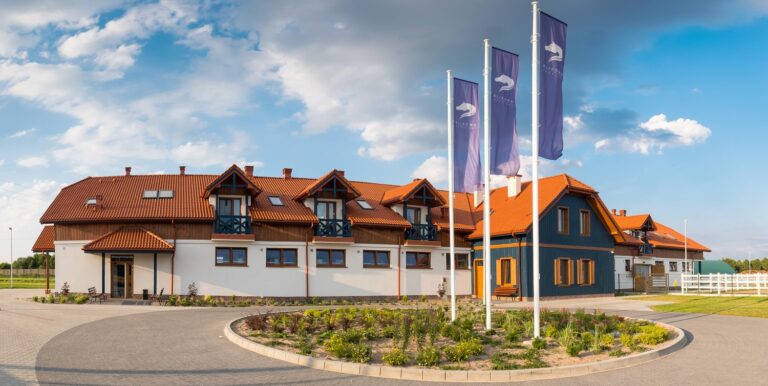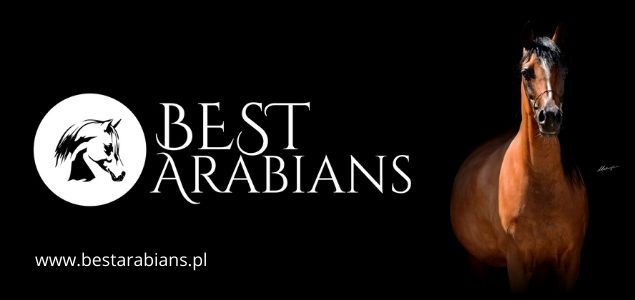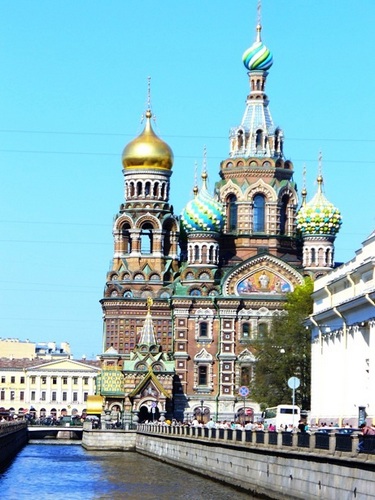
The C ranked International Arabian Horse Show (part of the 2nd All Russian Equestrian Games in St. Petersburg) went under the name of St. Petersburg Open. Was the prestige of the show comparable to other exhibitions of this sort in Europe? Unfortunately not. Nevertheless it is worth to recapitulate on this specific and new experience for the Polish participants.
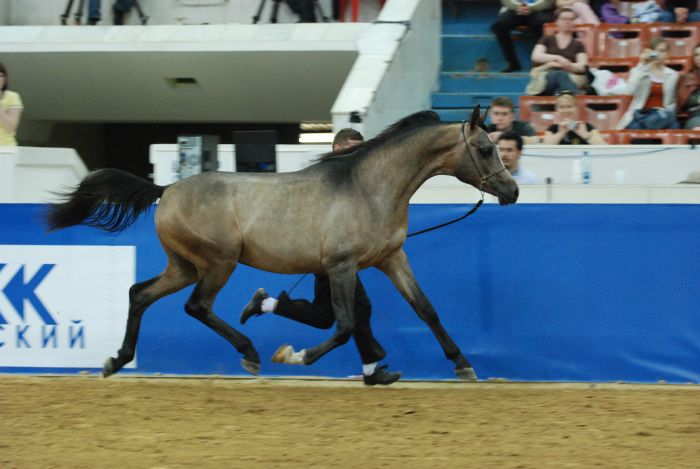
The Arabian horse show was part of a larger event which lasted from April 25th to May 4th. The program included paralympics in dressage, Russian Championships in horse stunts, a CSI 3* competition in show jumping and CDI 3* in dressage, Western and a countless number of special presentations – Andalusian, Lipizzaner, Akhal-Teke horses, stunt shows, ladies’ side saddle, a special presentation of the German Champion in harness driving and many more accompanying shows, which were performed at a truly high level. Surely the organizers of Polish equine events could make use of the ideas shown at the All Russian Equestrian Games. We will yet return to the special shows further in this article.
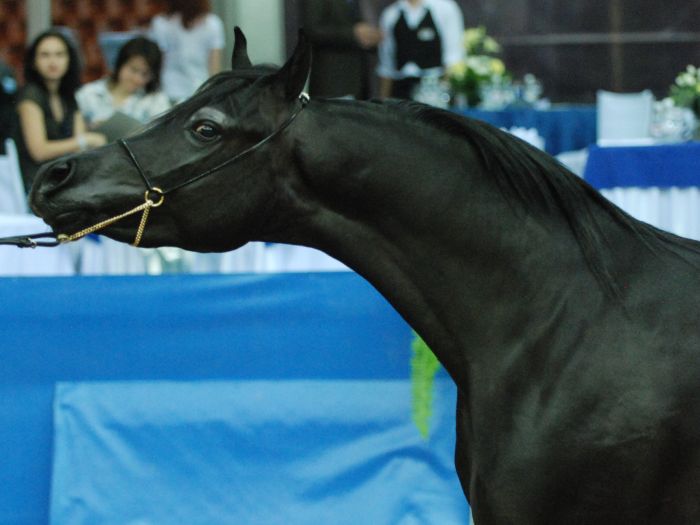
Poland was represented by eight Arabian horses (6 stallions and 2 mares), property of a couple of private studs: the two year old black Rascal (BS Black Fable – Ravenwood Nejma), bred and owned by Silvatica Black Arabians, the also black Ferro (BS Black Fable – Forsycja), bred by Silvatica Black Arabians, owned by Borys Padrus, Sortis (BS Ddiabolo – Silvatica/Fawor), bred and owned by Silvatica Black Arabians, Echo Ofira (Gaspar – Egzyna), bred and owned by Janusz Ryżkowski, Pilin Psyche (Padrons Psyche – Pilina), bred by Stanisław Redestowicz, owned by Czesław Witko, Fireball (Magnum Psyche – Flotylka), bred by Stanisław Redestowicz, owned by Tomasz Tarczyński, Garuna (Grafik – Gwarka) bred and owned by Agnieszka and Andrzej Wójtowicz, as well as Kashira (Magnum Psyche – Kahila IV), bred by Stanisław Redestowicz, owned by Agnieszka and Andrzej Wójtowicz. Without a doubt the greatest emotions belonged to the people who travelled nearly 1600 km in one direction (part of the team came by air) and who encountered many situations, both pleasant and horrifying. I was among them.
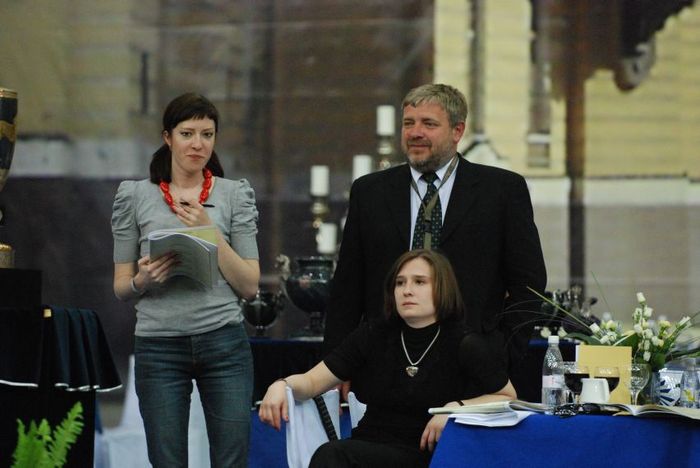
The Polish team began their journey to Russia already on the 27th of April. Horses from Silvatica Black Arabians and Echo Ofira spent the night at a befriended breeding facility in Suwałki and on Monday morning continued their journey through Lithuania and Latvia. The other horses departed from Bełżyce on the morning of the 28th of April, without stopping for the night along the way. In Latvia the Polish vehicles met at a previously arranged spot and so the attempt at crossing the Latvian-Russian border was undertaken by everyone together. The head of the Silvatica Black Arabians team was veterinarian Andrzej Bereznowski. Apart from him – a frequent visitor at Russian equestrian events – no one had the slightest premonition of what awaited at the border not only us, but mostly the animals, who were tired by the 1000+ km journey.
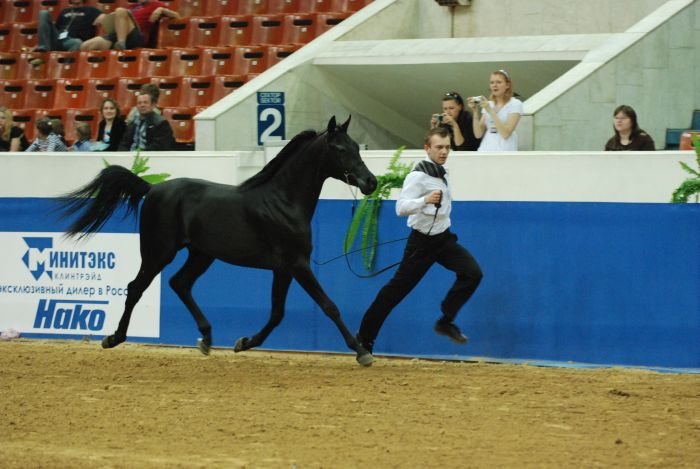
At the first gate, on the Latvian side, we were “handled” rather quickly. A real nightmare – stress, constant phone calls by turns to Russia and Poland, searching for documents, copying them, filling them out – began at the Russian gates. The stops at each of the next gates were getting longer and longer, to finally have the horses stuck for 8 hours between the customs clearance and veterinary clearance. Altogether they spent over 9 hours during this compulsory stop. We must admit that all in all they suffered the journey bravely, remaining calm and composed.
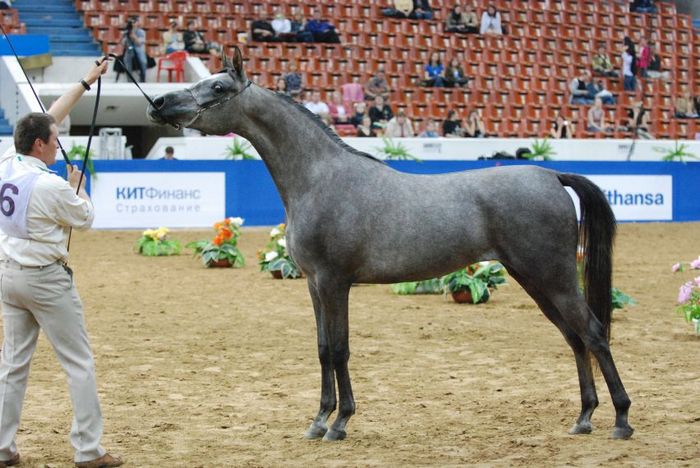
In the meantime we tried to communicate with the customs officers and officials speaking only in Russian. Dr Bereznowski knew the language perfectly, as the only one of our team. It turned out that without a fluent knowledge of Russian the entry into Russia and the filling out of all detailed documents (such as the number of buckets and brushes in every trailer) would be impossible. The slightest mistake in the document resulted in the crossing out of everything by the customs officer, anger and the handing back of the piece of paper – crumpled and crossed out. When we finally managed to cope with this task, a problem with the Polish documents turned up. Authorizations prepared in two languages (Polish and English) to drive rented vehicles were treated by the customs officers as illegible. One of our cars – a lorry, carrying four horses, was sent to be weighed. The other three passenger cars had to struggle through successive clearances. When it came to the veterinary clearance it turned out that the official veterinarian will not come out to us soon, because he has a lot of “paperwork”. Dr Bereznowski began strenuous negotiations, talks, pleas, calls to Russia, to Poland, again to Russia. The organizers of the show called the border with pleas, called back to the waiting Poles… The strangest thing in this hard, comic and sometimes dramatic situation was that as a convoy bearing animals we were served out of line! Finally the Russian vet came out, took some photos with a compact camera, signed the documents and we could travel on. At the final gate it turned out that the last truck with Polish horses lacks one, important document… However finally the ordeal to an end!
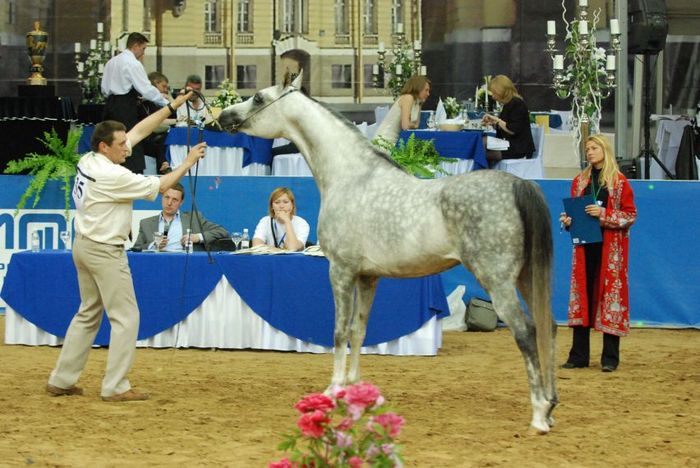
Now more than 500 km lay before us. Holes, holes, holes, where one could easily lose a wheel and even leave the entire suspension, sudden, unmarked narrowing of the road, forest, forest and again more forest, people standing in the middle of the road at night, asking for help, police in every village – all this on a road marked in the atlas as the main one. The Poles decided that they will never again complain about our Polish roads, as it would simply be a sin! The night journey through the “Russian taiga” lasted many hours. We arrived at Petersburg in the early morning. Before entering the city at an agreed spot a black Mercedes was waiting for us, with darkened windows, as from a thriller…
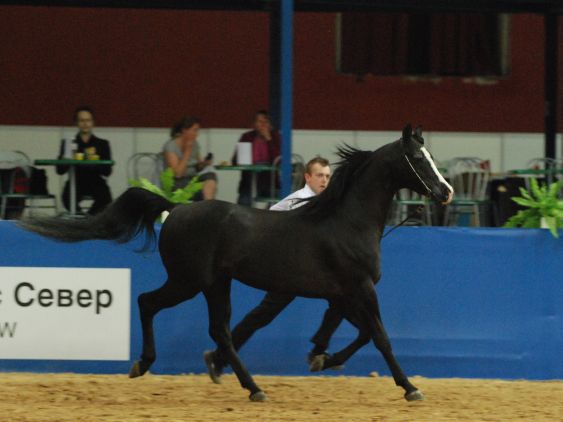
During the journey home the horses, which left in the early morning after the championships, spent “only” 4 hours at the border. However those that left the showgrounds in the evening once again had to wait at the gates between Russia and Latvia. But before that the Polish truck, bearing four horses, couldn’t leave the premises of the Petersburg facility! The problem was caused by an unpaid fee (800 euro) for an offence, which was the setting up of a barbecue next to the horse trailer. Despite earlier questions “if it’s allowed” and a permit to do so, it turned out that “it’s allowed”, but during the day, and when it gets dark, “it’s not”. In the morning there was gossip among the VIP tables that the Poles “caused mayhem”. In the end the security did not want to let the truck depart the premises. The horses were loaded, the people nervous… Again more phone calls. Finally the wire gate opened and the trailer headed for Poland. At the border it was again weighed and the horses required a payment of 250 euro each. In cash. Again phone calls to Poland, to the other Poles… In the end the money was paid by bank transfer from Poland to a Russian account and the confirmation sent by fax.
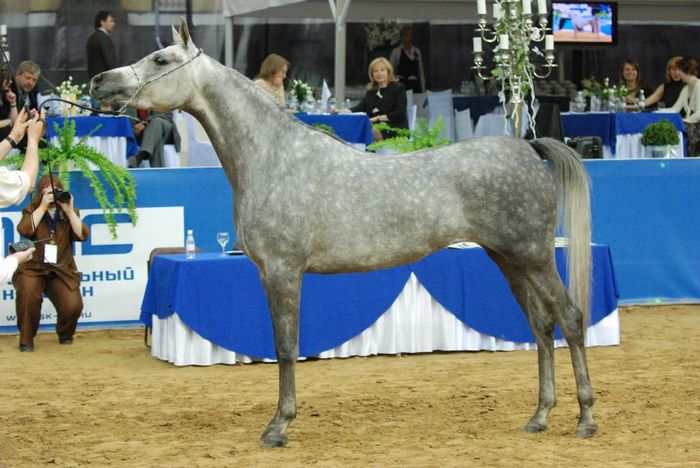
Andrzej Wójtowicz of Bełżyce Stud says:
“We feel like pioneers who conquered the Wild West. The scale of problems which we encountered is indescribable – from the officials creating difficulties at every step up to financial issues: the prices higher than in the West, but the standard of services much lower, plus the additional, unforeseen fees. Of course we are happy with the achieved titles and trophies, but there were moments when I felt it was not worth it. Surely I would not venture out on such a journey with the horses for a second time. If I ever do head in that direction it will be only by plane – or by land, if the Russians bring their perestroika to an end.”
Once we got to our destination we were surprised by the gigantic facility: an indoor arena able to amass thousands of spectators (during the Thursday championships the stands were full), tents set up for the horses, everything fenced tightly, secured by the police and tens of security guards. Urszula Łęczycka, the organizer of the trip for the Polish breeders, reports:
„The Sport and Concert Center with a huge arena and stands for 12,000 people, resembling our stadium in Katowice, was divided into two parts – the show section with the showring, VIP sector and mini-bar, as well as the warm-up ring. The partitions were concealed by natural sized models of historic buildings of Petersburg, which made a huge impression.”
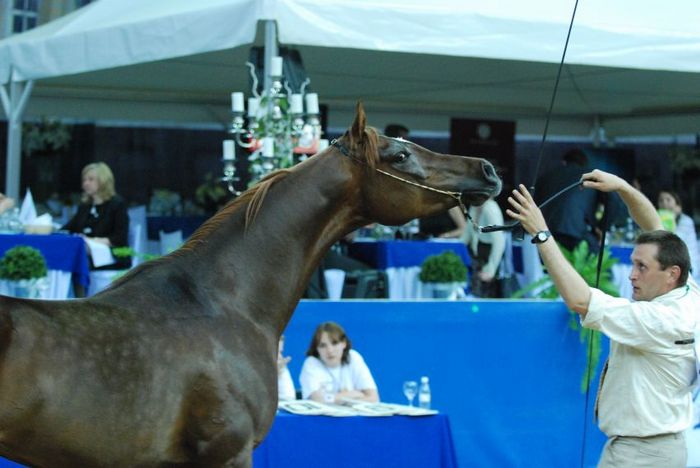
Tomasz Tarczyński (Grabów nad Pilicą) adds:
„The standard level of the championship, in terms of place, surpasses the Expo de Versaille in Paris. An enormous indoor arena for some n-teen thousand people, the ring, the VIP room with tens of tables. And only the lack of interest from breeders, as there were only the representatives of 3 studs and 3 private persons”.
We were shocked with a couple of details, a general untidiness in the stable and… toilets without handles. While using them you had to hold the doors with one hand. Just a hint of toilet paper. At the show itself the lack of a Disciplinary Committee came as a surprise. We noticed only one ringmaster, who did a poor job at keeping everything in line – the horses lined up wherever and however they wanted. During the shows in Western Europe it would be unacceptable and the handlers would be punished with yellow and red cards. Besides, most of the horses were unprepared to participate in the show. The handlers could not cope very well with their horses, a large part of them did not stand still for even 3-4 seconds. From the conversations with the Russians I learned that these horses do not undergo show training, but work under saddle, the mares give birth to foals and the stallions breed. They spent entire days on the pastures; their long coats were clearly visible. No make-up is used, no olive-oil, gels, cosmetics to give some shine. Many trainers had not even heard about sweating out the neck. The Russian-owned horses were barely “trimmed up”, and this was also done to only a few. They came out on the arena unwashed, only swiped with a sponge and brushed.
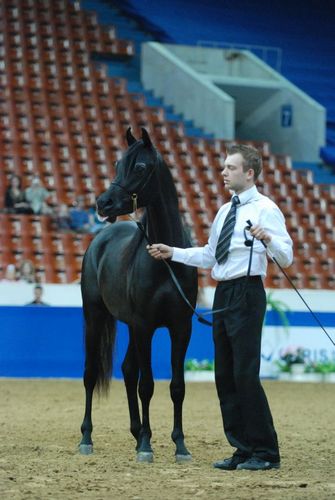
The handler of Silvatica Black Arabians, Tomek Jakubowski, comments:
„The difference in the presentation of the horses was huge. I think it is due to the lack of experience of the Russian handlers in preparing the horses and showing them on the arena. Polish handlers prepare a couple, even some n-teen horses each year, out of which every single one requires individual feeding, an individual amount of movement and a different approach in everyday work. The Polish horses are shown a lot at domestic and foreign events, where the handlers exchange experience and learn from the best (in terms of cosmetics, trimming methods, the condition of the horses and the way of presenting them on the arena). In Russia the horses were shown by their owners or persons taking care of them on a daily basis, but without a clue about the meaning of “show” during the event. Currently there are no people in Russia who would be doing this professionally, perhaps up to now there was no need for that. I believe that if Russian Arabian horse breeding will be evolving, such persons will definitely appear. For now, the East and West are separated by an enormous gap.”
There was no English speaking commentator. Also, during the presentation of the horses before the judges, the organizer gave information about each horse, handler and owner, which is not even thought of at other shows. But we must admit that the show had a great atmosphere about it, there weren’t any great delays and we were informed quickly about any changes. Says Urszula Łęczycka:
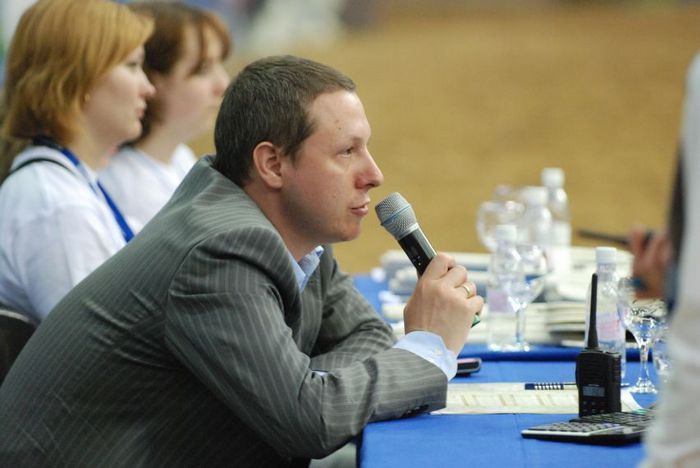
„Igor Botchkaev, who was the announcer of the show, had a lot of kind words to say about the Polish horses and their owners, introducing us the entire time as „friends from Poland”. In his opinion it’s good that the Polish horses came to Russia – showing local breeders not only in what direction they should go with breeding “brave and beautiful” horses, but also how they should be prepared and presented. It’s nice that Polish private breeders – although they are still learning from the best themselves – are looked upon as an example by their mighty neighbors. A great connection was established with the audience by the owner of Echo Ofira – Janusz Ryżkowski, who bowed to the public during decoration and received a loud applause. After coming off the arena he commented: “We came to Russia for them – the public, to give them a good time”. A huge impression was made also by Marek Demczuk, who jumped out like “jack in the box” with the stallion Echo Ofira – one of the last in class – winning at the last moment not only his class, but also the Junior Stallion Championship.
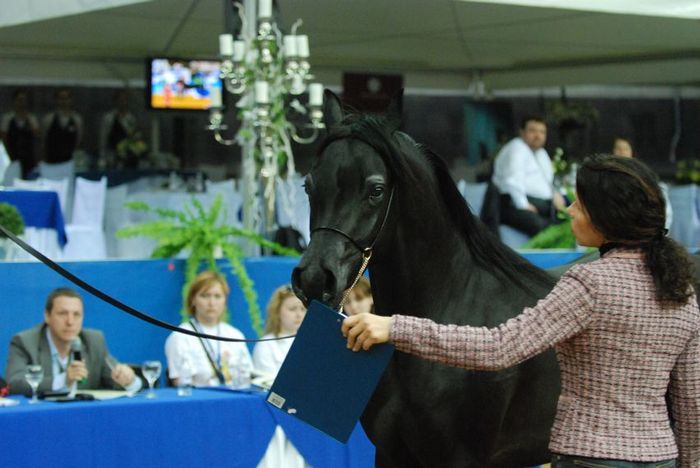
Marta Napióra of Silvatica Black Arabians adds:
“The horses were very well evaluated (Rascal – 90,6), considering the terrible journey and their disposition after it. Sortis suffered it the worst, which unfortunately took toll on his movement and I think on the general impression as well.”
When I observed the Russian and Kazakh horses, trying to photograph them so that their beauty could be noticeable, I was haunted by these questions: what’s happening to Russian breeding? Why don’t these horses resemble the ones currently bred in Europe? Why do they look more like half-breds than pure-breds? Why aren’t foreign stallions brought in to refine type? Why does the arrival of Polish horses cause a complete failure of the hosts? Does Russia have any kind of breeding program? Do the horses undergo selection? Why aren’t they seen at international shows? What happened to the brave and beautiful horses from Tersk? Many breeders are proud that their horses posses Russian ancestors beside Polish ones. Where have the horses known from the tales and the photographs of old gone?
Says Tomasz Tarczyński:
„Horses bred in 3 major studs: Tersk, Lada Konsul and Pomoskowskij Stud look (with no offence to anyone) like horses from Kurozwęki from the time when the herd was put up for sale – strong bodies with good movement, but not much Arabian type, often with a head of a half-bred Arabian. Horses from Kazakhstan come mainly from Tersk, so they present a similar conformation to the Russian ones”.
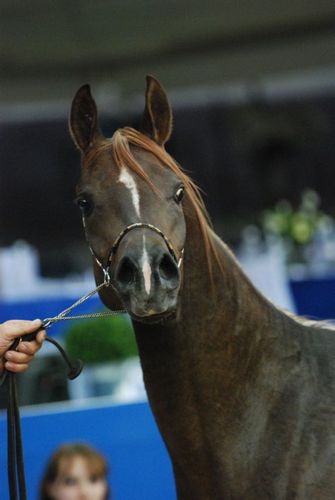
Urszula Łęczycka adds:
„When watching the Russian horses I had a feeling that I travelled 10 years back and looked at horses from the Polish private studs. However I must stress how fast – observing the State and foreign studs (their methods of mating, the stallions they use, the preparation and training) – the Polish private breeders have bred horses which for a couple of years now have a lot to say on the domestic show arenas as well as abroad. It’s interesting that Russian and Polish horses – who in the majority have the same ancestors not so far back – are so different in type! The Russians – meaning Tersk, who was not that long ago the leading and only organized breeding of Arabian horses in Russia – decided to breed mainly racing horses, with good results. When I spoke with Igor Botchkarev, the organizer of the show, about the modern breeding profile in Tersk, he said: “ Tersk has a herd divided into race
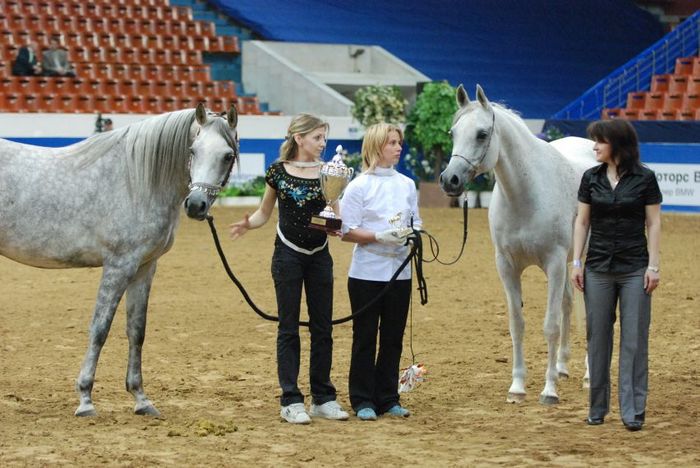
horses and everything else.” But changes are already noticeable. This year a huge interest was stirred by the Tersk-bred chestnut daughter of Pobeditel, Belianka, who was a strong rival of the Polish Garuna – a strong mare, with good movement and a head worthy of any Western stud with a show profile. Two breeders from Poland even began negotiations to buy this mare. Another interesting mare, which was at once spotted by the Polish team (as her stall stood next to that of Kashira’s) was Madam Blius by Barkas, privately bred (Veles Stud) and owned (Tatiana Kosolapova) – refined, correct, with a large black eye, dry head and free movement. She became Reserve Champion in the show and Champion in the Liberty Class. Russian breeders are more and more bravely using fashionable foreign stallions – at the Petersburg show you could see youngsters by WH Justice or Psytadel, also a lot of breedings were bought lately of a young American stallion by Marwan Al Shaqab.”
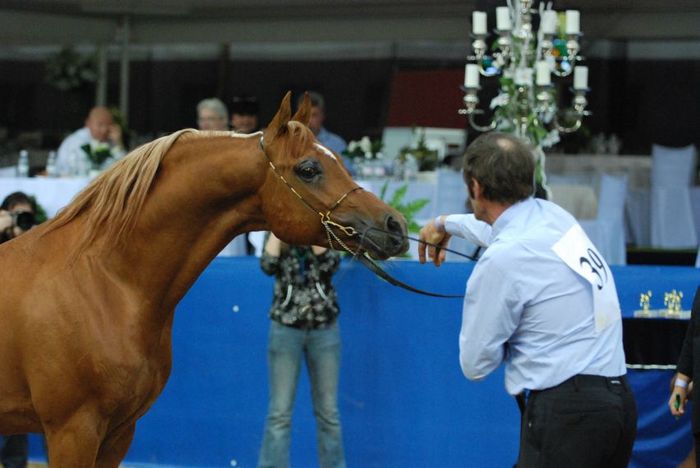
“So I believe”, Urszula Łęczycka continues, “that in a couple of years’ time we will also see the Russian horses on arenas West of Petersburg and Moscow, especially since the Russians want to learn. When I asked Igor Botchkarev about the Russians’ feelings towards the fact that a group of horses from Poland seized almost all the trophies in the halter classes he said that… he is very pleased! Igor, descending from an influential in the world of Russian breeders Moscow family, owners of the Moscow club Socoros (host of the national show) and supporters of the publishing of the Russian stud book, is a very engaged propagator of the development of show breeding in Russia – it is mainly thanks to him that the Polish team came and left with smaller problems than they could have had”.
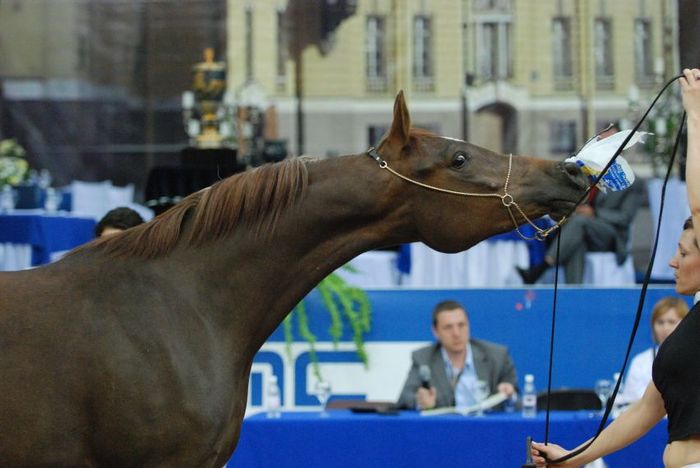
I also searched for the answers to these questions in Russia while talking with the breeders. It turns out that these horses aren’t really show horses, they never really have been, as Russia never intended to breed for showing. The Russian horse simply WAS. He was to be correctly built, with type and to be able to succeed in racing. The horses do not go West, because they are not prepared to do so. The breeding is “closed”, there is no dosage of foreign blood, the horses are mated within the “Russian breed”. The trends in the West have been changing, while in Russia they remained the same.
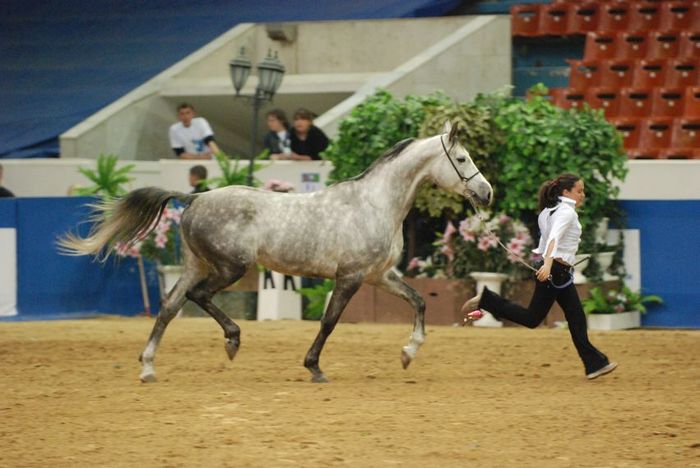
Mrs. Izabella Pawelec-Zawadzka, when asked by me about this explained, that Russian breeding went through many turbulent periods. Until such governors as Ponomariev, Poczkarev and other of their kind lived and supervised state breeding, the breeding maintained a certain level of quality, auctions and shows were organized, during which good horses were exported to the West, including the US. However breeding was devastated and drained by politics and the regime. In Russia, just like in the world, a lot of good was done in breeding by the blood of such stallions as the Egyptian bred Aswan, who in Tersk left his most superb progeny and whose blood was also brought to Poland, as well
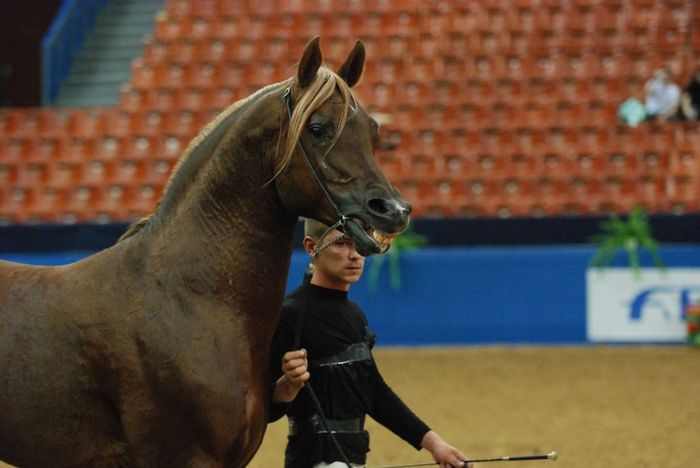
as Balaton and his son Kubinec. However finally many good horses, often in an illegal, unexplained until this day way, found their way to private breeders. The chaos and political disarray left its mark on breeding. This disarray lasts in Russia until today. The situation of the downfall of state Thoroughbred breeding in Poland and the downfall of the racetrack is similar to the situation of breeding pure breds in Russia. Although state breeding still exists there, it doesn’t have a breeding program, which would allow the horses from Tersk to compete against the Western horses. Buyers from Russia or Europe don’t come to
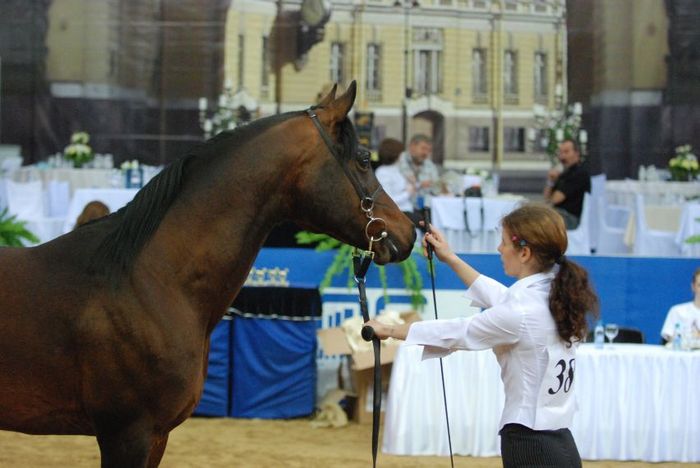
Russia anymore, almost nobody comes. What’s worse is that Russia is not exactly eager to travel with their horses abroad. When in Poland the International Arabian Horse Show in Poznań was organized, the Tersk horses were warmly invited to participate in the show. However they did not come. Which comes as no surprise considering the problems which are encountered by horses wanting to leave or enter Russia! In addition to that there are the Russian roads. A two day journey would mean torture for the horses.
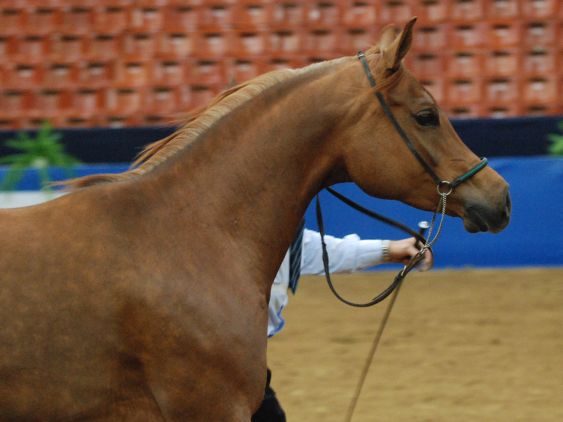
The Poles are wondering whether the presence of the Polish horses at Petersburg will change something, whether those breeders will open up for Polish horses, our market, our methods of feeding, training, preparation of horses, way of showing or even the apparel of the handlers. The Poles constantly repeated: “They must learn, not mimic, but observe, ask…” The Poles, travelling to shows in various parts of Europe, also learn. One more observation: presenters and breeders, meeting at international shows, greet each other with the simplest of gestures – a smile or a “hello”. In such way are new acquaintances made, friendships, contacts which are vital for exchanging experience and opinions. In Russia unfortunately no one was smiling, handlers and grooms walked by with their heads down without a trace of a smile. No one spoke to us, no one tried to start a conversation. Only in the evening when we were returning from tending the horses we heard shouts in Russian to come and drink vodka with them…
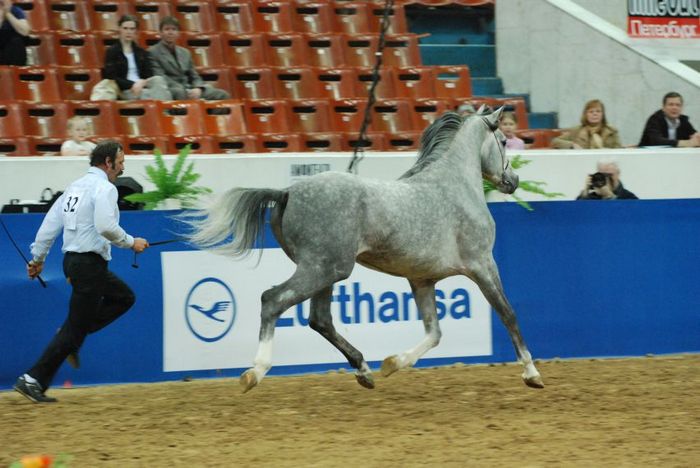
Tomasz Tarczyński recalls:
„Nobody showed any interest in the foreign horses – what are their pedigrees, whether they won anything, what we have, what we breed – and all this even though I was more than willing to speak in their national language. It was rather our breeders who “pestered” the Russians, asking about the pedigrees, selling, what other horses they have. Only a pair of breeders from Tersk were open to talk, told us about their horses, that they have bred to Psytadel and WH Justice, that they sell annually about 50 horses, mainly to Kazakhstan and some to Azerbaijan, to the buoyantly developing races in those countries. Sometimes a couple of good horses are picked traditionally by Kossak Stud from Holland. The other stud, Chriennowoje, and a large private Orońsk Stud do not participate in the shows, breeding mainly racing horses.”
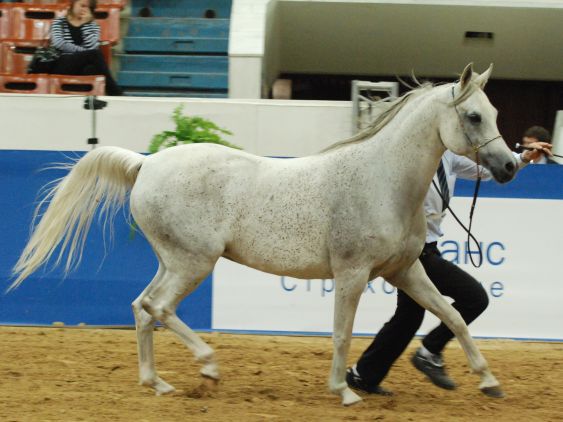
Mrs. Izabella Pawelec-Zawadzka explains:
“We must remember that breeding such extraordinary animals as Arabian horses is always created by horses and people, not the horses alone. I think that currently in Russia there is a lack of both, especially people, who would be able to raise breeding and lead it into the right direction.”
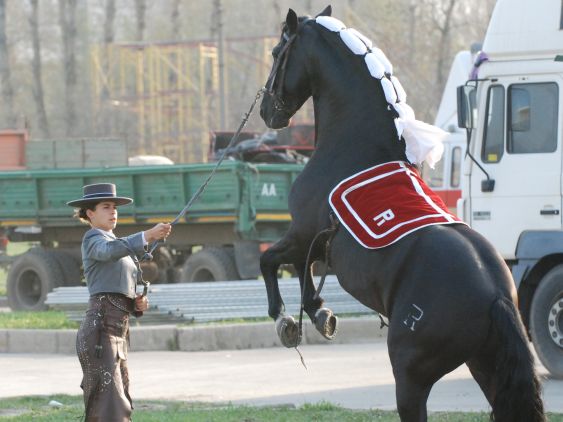
Undoubtedly a bright accent of the event were the afore mentioned special presentations. Urszula Łęczycka recounts:
„One could have had the impression that the Arabian horse show was rather an addition to the special presentations which took place every evening. I had the opportunity to see such shows at other championships, but I must say that what the Russians presented even the Salon du Cheval could envy. The evening presentations, that took place nearly every day of the entire All Russian Equestrian Games, went under the joint name of World Conquered by Horses and consisted of a 2 hour presentation of groups from various countries – and so there was a fantastic show by the Spanish group of the 82 year old picador Angelo Peralta on Andalusian horses performing dance routines with flamenco dancers; the outstanding abilities of a 4 horse harness performed by a German-Russian pair; a two part show of the
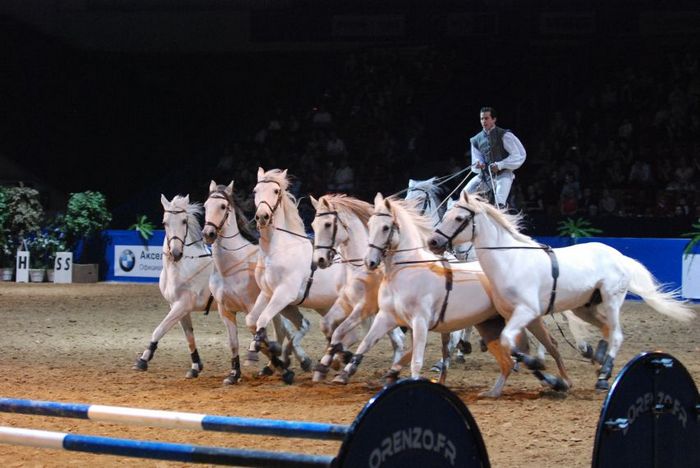
famous “flying Frenchman” Lorenzo, who is known for driving 8 Lusitano horses while standing on their backs, which with and without harness jump obstacles and perform feats at the slightest sign of their trainer. Huge emotions were stirred by the stunts performed by the Kazakh Kossaks, who entered the arena not only with horses, but also with cannons. One has to admit that the stunts presented elsewhere are kindergarten when compared to what the afore mentioned group showed in Petersburg – dynamic music and a terrific speed, at which the evolutions were performed caused even the guests sitting in the VIP sector to watch the show standing near the barriers in order not to miss a single thing. Both the observers and the performers had a great time during the evening presentations. The afore
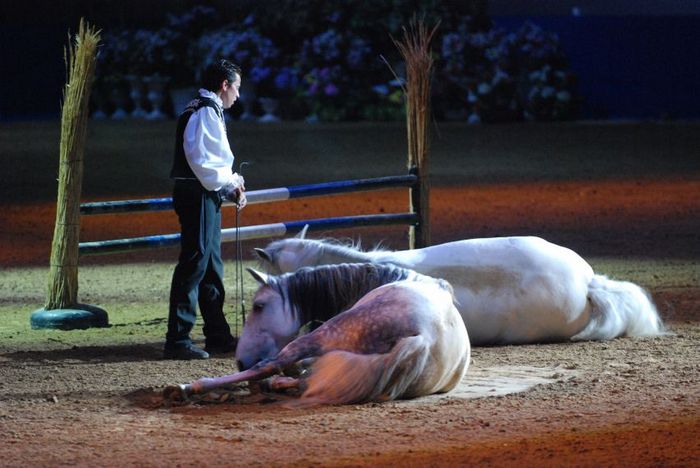
mentioned Lorenzo, who gives a show nearly every weekend in another part of Europe or the Middle East, came to St. Petersburg for the second time – despite a serious injury and doctor’s warnings and after the show he admitted: “The stage fright is huge each time – horses are only animals and you can never foresee what can happen on the arena at such speed, every time before entering the arena I curse myself for having chosen such a profession – however after the show the adrenaline drops and my show schedule is full. My work is my dream – and performances before such public as the one in Petersburg are a pleasure.” What was unusual was that so many and so well schooled horses could be seen in Petersburg at the special shows and that it was evident how widespread (much more than in Poland!) equestrian sport is. Horses of many breeds were shown, in various types of work, under riders of various age, there were even championships for the disabled. It should be noted that on the show grounds as many as 5 equine magazines were distributed”.
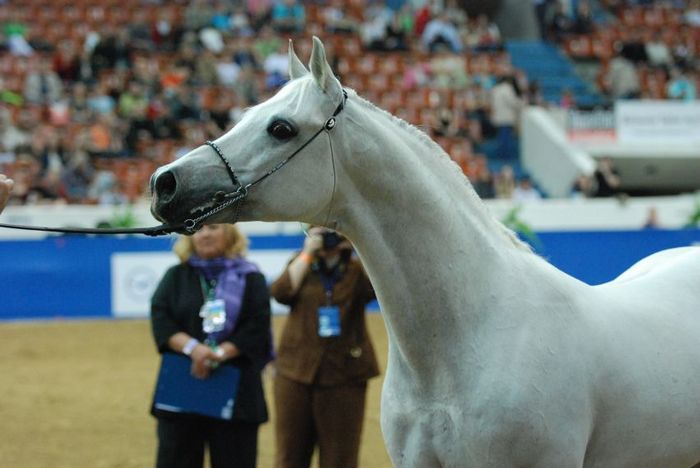
What was missing at this show? Again Urszula Łęczycka:
“In my opinion mostly the attendance of breeders and entered horses – the situation is not made easier by the distance from Western Europe and Russia’s political system and the mentality of the officials, who still find pleasure in making life hard for the common citizen. But we must remember that it is the only thing which is out of reach of the show organizers – everything else turned out splendidly. We must praise the splendor and richness with which the place of the show was prepared, the speed and efficiency of the technical staff changing the decor of the arena and the well-chosen music. And the charm of the hosts, who took care of the comfort of the guests not only on the show premises, but also outside it – we had the chance at sightseeing Petersburg, taste Russian vodka with a viper in the bottle (which some members of the party wish not to remember) and establish some new interesting contacts, which may bear fruit in the not-so-distant future. I believe that the Russians, making use of the experiences of the Western neighbors, have an opportunity to very quickly raise their breeding of show horses to a very high level and to establish and keep up the good contacts with their breeders, we must endeavor after them now.”
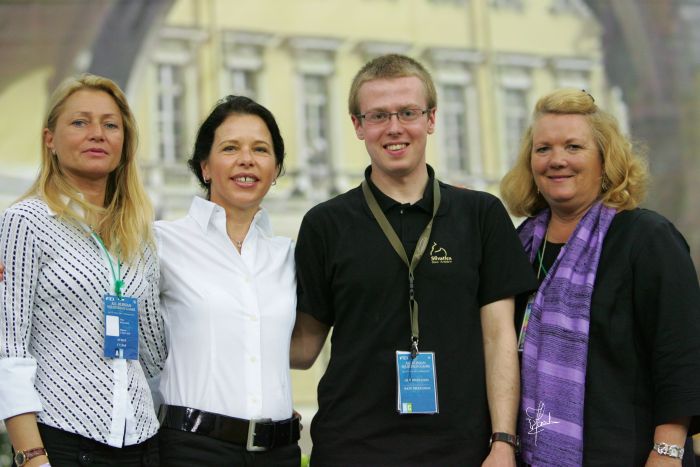
Similar to other members of the excursion, I also am wondering about the future of this event. Will any of the Polish breeders go there next year after the adventures they encountered this time? Will anybody else participate in it beside the hosts and Kazakhstan? Will this show be “international” only in the name of the event? Perhaps during the year the unpleasant memories will fade, and the only thing remaining will be the sweet smell of the Polish successes.
Results:
Junior Champion Stallion
Echo Ofira (PL)
Junior Reserve Champion Stallion
Rascal (PL)
Junior Champion Mare
Garuna (PL)
Junior Reserve Champion Mare
Belianka (RU)
Senior Champion Mare
Kashira (PL)
Senior Reserve Champion Mare
Madam Blius (RU)
Senior Champion Stallion
Lobeke (NL)
Senior Reserve Champion Stallion
Pilin Psyche (PL)
Class Top Fives:
Class I – 1-3 year old colts
1. Echo Ofira (Gaspar – Egzyna/Eldon), breeder/owner Janusz Ryżkowski – 126 points
2. Rascal (BS Black Fable – Ravenwood Nejma/Ravenwood Sihr), breeder/owner Silvatica Black Arabians – 120 points
3. Nubiec (Balaton – Neapolitanka/Piligrim), breeder Tersk, owner Tlevlesov N., KZ – 118 points
4. Ferro (BS Black Fable – Forsycja/Fawor), breeder/owner Silvatica Black Arabians – 118 points
5. Mizami (WH Justice – Nairobi/Balaton), breeder/owner Tersk
Class II – 1-3 year old fillies
1. Garuna (Grafik – Gwarka/Monogramm), breeder/owner A.A. Wójtowicz
2. Belianka (Pobeditel – Byl/Pakistan), breeder/owner Tersk
3. Miss Psytadel (Psytadel – Molvina/Balaton), breeder/owner Tersk
4. Geveia (Vivat – Glyba/Bagdad), breeder/owner Lada-Konsul
5. Gvadiana (Vivat – Gaiana/Nagan), breeder/owner Lada-Konsul
Class III – 4 year old and up mares
1. Kashira (Magnum Psyche – Kahila IV/Ibn Bint Inas, breeder St. Redestowicz, owner A. Wójtowicz
2. Madam Blius (Barkas – Molitva/Vatican), breeder Veles Stud, owner Tatyana Kosolapova
3. Miza (Piligrim – Mediana/Balaton), breeder/owner Tersk
4. Nerl (Balaton – Nevesomost/Mukomol), breeder Stanitsa Stud, owner Tatyana Kosolapova
5. Venta (Balaton – Vendetta/Naftalin), breeder/owner Tersk
Class IV – 4-5 year old stallions
1. Pilin Psyche (Padrons Psyche – Pilina/Eternit), breeder St. Redestowicz, owner Kielnarowa Stud
2. Fireball (Magnum Psyche – Flotylka/Emigrant), breeder St. Redestowicz, owner T. Tarczyński
3. Monomah (Madiar – Manana/Armaniak PL), breeder/owner Tersk
4. Bumbarash (Medunec – Bogara/Gwizd PL), breeder Voskhod Stud, owner Podmoskovie Stud
5. Sortis (BS Ddiabolo – Silvatica/Fawor), breeder/owner Silvatica Black Arabians
Class V – 6 year old and up stallions
1. Lobeke (Fiolek – Eleskirt/Testigo), breeder Marquesa de Borbon, ES, owner Zenith Arabians, NL
2. Gasir (Motamid – Braken/Fakateko), breeder Jaqueline van Dyke, ES, owner Zenith Arabians, NL
3. Eliksir (Sarkazm – Epika/Esplendor GB), breeder/owner Lada-Konsul
4. Sirdar (Nejma Zomorrod – Santa-Podova Statement (AU)/Fairview Amir Sah-Heer), breeder Sheikh Mansoor Bin Zayed Bin Sultan Al Nahayyan, AE, owner Tersk
5. Velburn (Balaton – Votchina/Nahodchivyi), breeder/owner Veles Stud
Liberty Class – mares
1. Madam Blius (Barkas – Molitva/Vatican), breeder Veles Stud, owner Tatyana Kosolapova
2. Galapeia (Parubok – Glyba/Bagdad), breeder/owner Lada-Konsul
3. Nerl (Balaton – Nevesomost/Mukomol), breeder Stanitsa Stud, owner Tatyana Kosolapova
4. Gvadiana (Vivat – Gaiana/Nagan), breeder/owner Lada-Konsul
5. Vivena (Vivat – Vepola/Paladin), breeder/owner Lada-Konsul
Liberty Class – stallions
1. Lobeke (Fiolek – Eleskirt/Testigo), breeder Marquesa de Borbón, ES, owner Zenith Arabians, NL
2. Monomah (Madiar – Manana/Armaniak PL), breeder/owner Tersk
3. Bumbarash (Medunec – Bogara/Gwizd PL), breeder Voskhod Stud, owner Podmoskovie Stud
4. Plan (Antigon – Princessa/Negesimyi), breeder Veles Stud, owner Tatyana Kosolapova
5. Niburg (Barkas – Naiada/Diatel), breeder/owner Veles Stud
See also: The Poles rocked St. Petersburg and take a look at the photo coverage!


